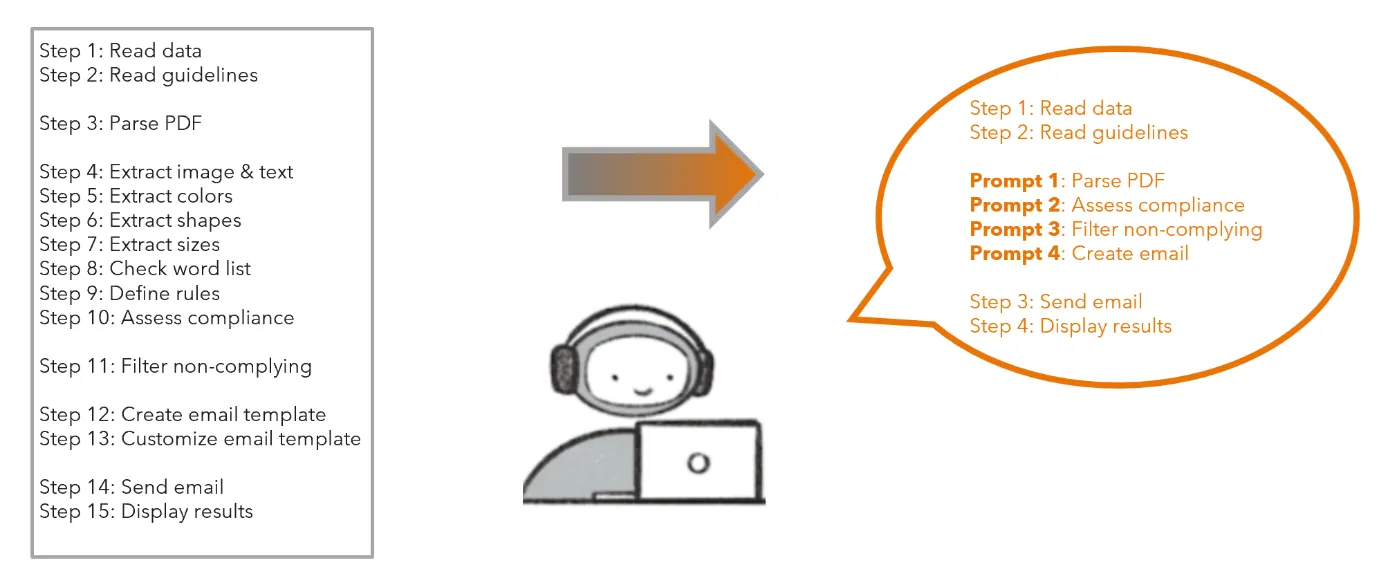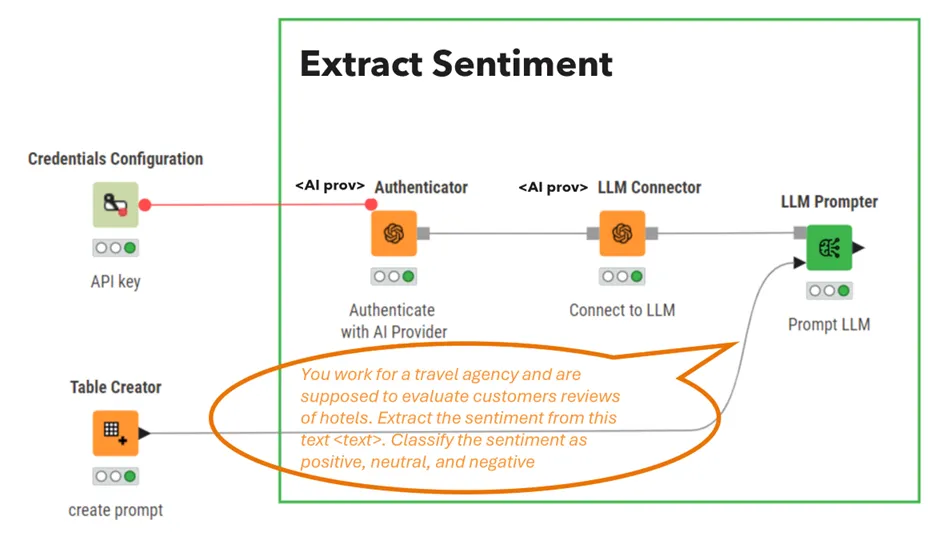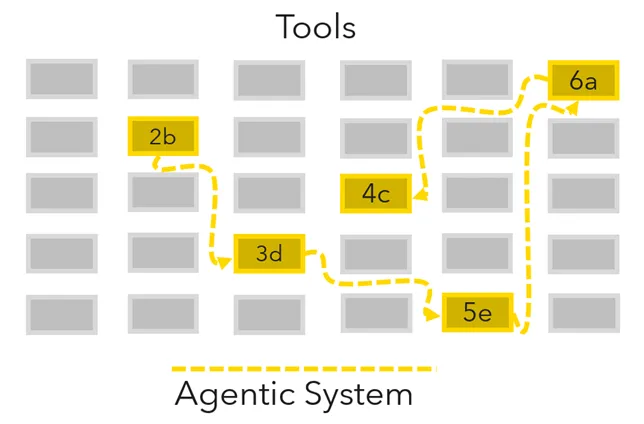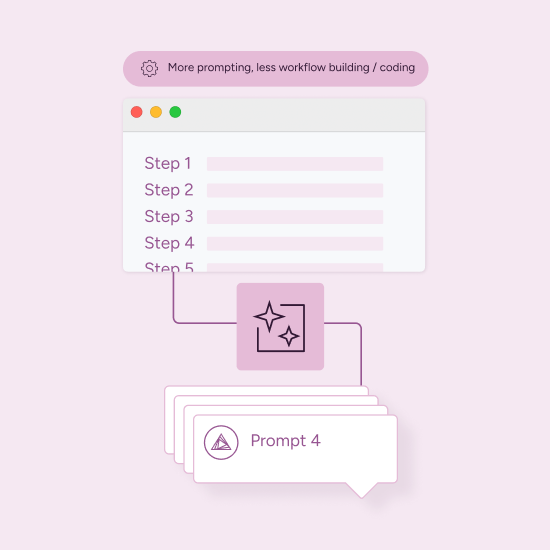The original version of this article was published in Low Code for Data Science.
I once said that “data science is not dead, but it has surely changed”. I think by now a reflection on how my job as a data scientist has changed, is long overdue.
I can see three areas that have been impacted by the introduction of AI in my daily job.
- More prompting, less workflow building or coding
- More AI agents and tools, less components or functions
- Thinking by prompts instead of operations

Let’s see what all that means.
More prompting, less workflow building / coding
It is undeniable that prompting has taken the data scientists’ job lives by storm. Now you do not build and train an LSTM (Long Short-Term Memory) network for sentiment analysis on a text dataset. Now you just prompt, and you get the sentiment hidden within the text, just like that.:
“You work for a travel agency and are supposed to evaluate customers hotel reviews. Extract the sentiment from this text <include text>. Classify the sentiment as positive, neutral, and negative”

Could I have built a model that performs better than the AI model?
Probably not in terms of performance but maybe in terms of reproducibility. AI engines, even with the Temperature parameter set to 0, remain highly non-deterministic. However, it would not have been worth it. The production of my own model would have taken a considerable amount of time: collect the data, build the network, train the network, optimize the network, and deploy the final model. All costly steps.
On the other hand, prompting AI to evaluate the sentiment in a text, takes a few minutes, just the time to write a correct, clear, and exhaustive prompt.
Prompting has become so incredibly common that a new discipline has been created: prompt engineering.
More AI agents, less KNIME components / Python functions
Another big change is the introduction of AI agents.
Instead of thinking in terms of Python functions or KNIME components, I have started thinking in terms of AI tools and agents. This is not completely new. It reminds me of the service-oriented architecture from a few years ago, where implementation of services was the key to a modular software architecture.
The main difference between a service back-then and a tool or an agent now, is the reasoning in and / or around it. Tools and agents in an agentic system are services based on AI and / or orchestrated by AI. In an ideal world, you would have access to a full catalog of tools and agents and you, or your AI agent, could combine them into a solution for a given task.
For more information on tools, AI tools, AI agents, and agentic systems, check this article on Agentic AI and KNIME.

Thinking by prompts instead of operations
This may be the biggest change of all in my everyday data analytics routine; a change that has required a shift in my way of thinking. That is, I have started thinking in terms of prompts rather than in terms of operations.
Here’s an example:
Recently, we built an application to check images for compliance with the company’s branding guidelines. We prompted AI to verify such compliance. As a result, we got extensive textual comments, explaining why or why not an image was compliant with the guidelines.
The next step was to remove the compliant images and just keep the problematic ones. This seems easy, but remember that we had only comment texts available.
We worked to find a way to extract the compliance flag from the LLM result comments, but this turned out to be trickier than we thought … till we had an enlightening idea.
Instead of applying instructions to isolate the relevant words from the comments, we could just feed the comments into the AI model again and prompt it to flag the ones describing non-compliant images. Et voilà! It worked easily and smoothly.
There I realized that my thinking process had changed: from thinking of the next operation in the sequence into thinking of another prompt or even of a better optimized version of the existing prompt (see the first screenshot). It took a bit of time, but now the mental shift has been completed. I now think more often in terms of prompts than in terms of operations in the sequence.
Note that prompts are also organized in a sequence, like operations. However, a well-written prompt can include many basic operations and without the need for a rigid syntax.
Talking to the data
It took a bit of time, but the mind shift has happened. Since the introduction of AI, my daily job as a data scientist has seen a few changes, where I had to expand my mindset to include the new technology.
In this article, I listed three main changes — at least those that I am aware of — that the introduction of AI has brought into my daily professional life as a data scientist.
- More prompting, less hacking
- More AI agents and tools, less components and functions
- More thinking by prompts rather than by operations
Quoting Philipp Kowalski from the panel “Finance, Auditing, and AI” at the last KNIME Summit in Berlin, we are moving from writing a sequence of syntactically structured operations to talking to the data.
